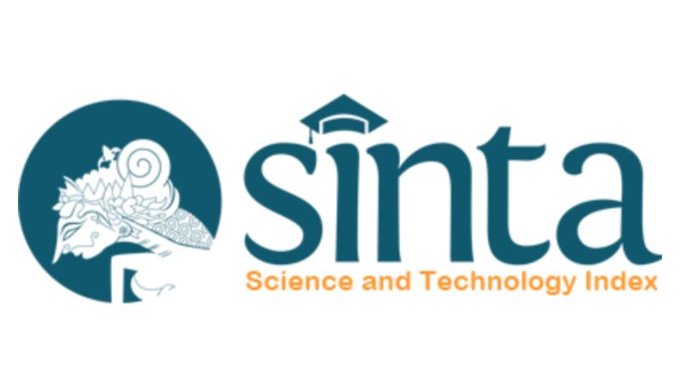Terapi Hipotermia untuk Neonatus Asfiksia
DOI:
https://doi.org/10.55175/cdk.v47i3.353Kata Kunci:
Asfiksia, hipotermia, neonatusAbstrak
Asfiksia adalah kegagalan napas spontan dan teratur pada saat atau beberapa saat setelah lahir. Asfiksia dapat menimbulkan komplikasi jangka pendek ataupun jangka panjang yang berbahaya bagi pertumbuhan dan perkembangan neonatus. Salah satu intervensi pilihan adalah terapi hipotermia yang lebih baik dilakukan dalam kurang dari 6 jam setelah kejadian. Prosedur dilakukan melalui 2 tahap, yaitu hipotermia dan rewarming, yang masing-masing membutuhkan langkah dan perlakuan berbeda. Terapi hipotermia juga dapat menimbulkan beberapa efek samping terkait penurunan suhu tubuh.
Asphyxia is a failure of spontaneous and regular respiratory process at or a moment after birth. Asphyxia can cause short and long term complications, which are detrimental for growth and development. An intervention option for asphyxia is hypothermia therapy that should be done within 6 hours after asphyxia occurence. The procedure is performed in 2 stages, which are hypothermia and rewarming, each with different methods and treatments. Despite the advantages hypothermia therapy can also cause adverse events related to decreased body temperature.
Unduhan
Referensi
Ikatan Dokter Anak Indonesia. Pedoman pelayanan medis. Jakarta; 2009.
Cerio FG, Celador IL, Alvarez A, Hilario E. Neuroprotective therapies after perinatal hypoxic-ischemic brain injury. Brain Sci. 2013;3:191-214.
American College of Obstetricians and Gynecologists’ Task Force on Neonatal Encephalopathy. Neonatal encephalopathy and neurologic outcome. 2nd ed. Pediatrics 2014;133(5):1483-8.
Lehtonen L, Gimeno A, Parra-Llorca A, Vento M. Early neonatal death: A challenge worldwide. Seminars in Fetal and Neonatal Medicine. 2017;22(3):153-60
Portillo GSG, Reyes S, Aguirre D, Pabon MM, Boriongan CV. Stem cell therapy for neonatal hypoxic-ischemic encephalopathy. Frontiers in Neurology 2014;5(147):1-10.
Annink K, de Vries L, Groenendaal F, van den Heuvel M, van Haren N, Swaab H, et al. The long-term effect of perinatal asphyxia on hippocampal volumes. Pediatr Res. 2018;85(1):43-9.
Ahearne C. Short and long term prognosis in perinatal asphyxia: An update. World Clin Pediatr. 2016;5(1):6.
Wood T, Thoresen M. Physiological responses to hypothermia. Seminars in Fetal and Neonatal Medicine. 2015;20(2):87-96.
Owji Z, Gilbert G, Saint-Martin C, Wintermark P. Brain temperature is increased during the first days of life in asphyxiated newborns: Developing brain injury despite hypothermia treatment. Am J Neuroradiol. 2017;38(11):2180-6.
Maoulainine F, Elbaz M, Elfaiq S, Boufrioua G, Elalouani F, Barkane M, et al. Therapeutic hypothermia in asphyxiated neonates: Experience from neonatal intensive care unit of University Hospital of Marrakech. Internat J Pediatr. 2017;2017:1-7.
Laptook A, Shankaran S, Tyson J, Munoz B, Bell E, Goldberg R, et al. Effect of therapeutic hypothermia initiated after 6 hours of age on death or disability among newborns with hypoxic-ischemic encephalopathy. JAMA. 2017;318(16):1550.
Antonucci R, Porcella A, Pilloni MD. Perinatal asphyxia in the term newborn. Journal of the Pediatr and Neonatal Individualized Med [Internet]. 2014;3(2). Available from: http://www.jpnim.com/index.php/jpnim/article/viewFile/030269/214
Wassink G, Gunn ER, Drury PP, Bennet L, Gunn AJ. The mechanism and treatment of asphyxia encephalopathy. Front Neurosci. 2014;8:40. doi: 10.3389/fnins.2014.00040.
Cunningham MD, Eyal FG, Gomella TL. Neonatology management, procedures, on-call problems, diseases, and drugs. New York, N.Y.: McGraw-Hill Education LLC.;2013. Available from: http://accesspediatrics.mhmedical.com/book.aspx?bookid=677
Mosalli R. Whole body cooling for infants with hypoxic-ischemic encephalopathy. J Clin Neonatol. 2012;1(2):101–6.
Gleason CA, Devaskar SU, Avery ME, editors. Avery’s diseases of the newborn. Christine A. Gleason, Sherin U. Devaskar, eds. 9th ed. Philadelphia, PA: Elsevier/Saunders; 2012. p.1498.
Chandran R, Gedam DS. Therapeutic hypothermia in perinatal asphyxia. Pediatr Rev Int J Pediatr Res. 2016;3(2).
Takenouchi T, Iwata O, Nabetani M, Tamura M. Therapeutic hypothermia for neonatal encephalopathy: JSPNM & MHLW Japan Working Group Practice Guidelines. Brain and Development. 2012;34(2):165-70.
Davidson JO, Wassink G, Heuji LG, Bennet L, Gunn AJ. Therapeutic hypothermia for neonatal hypoxic-ischemic encephalopathy – Where to from here? Frontiers in Neurology 2015;6(198):1-10.
Newell R, Clark RH, Ellsbury D, Ursprung R, Smith PB, Cotton CM, et al. Emerging use of therapeutic hypotermia for neonatal hypoxic ischemic encephalopathy. E-J Neonatol Res 2013;3(2):38-46.
Ng E, Taddio A, Ohlsson A. Intravenous midazolam infusion for sedation of infants in the neonatal intensive care unit. Cochrane Database of Systematic Reviews. 2017;(1):1-35.
Soll RF, Burlington. Cochrane review update. Neonatology 2013;104:260-2.
Azzopardi D, Strohm B, Marlow N, Brocklehurst P, Deierl A, Eddama O, et al. Effect of hypothermia for perinatal asphyxia on childhood outcomes. NEJM 2014;371(2):140-9.
Unduhan
Diterbitkan
Cara Mengutip
Terbitan
Bagian
Lisensi
Hak Cipta (c) 2020 Cermin Dunia Kedokteran

Artikel ini berlisensi Creative Commons Attribution-NonCommercial 4.0 International License.





















